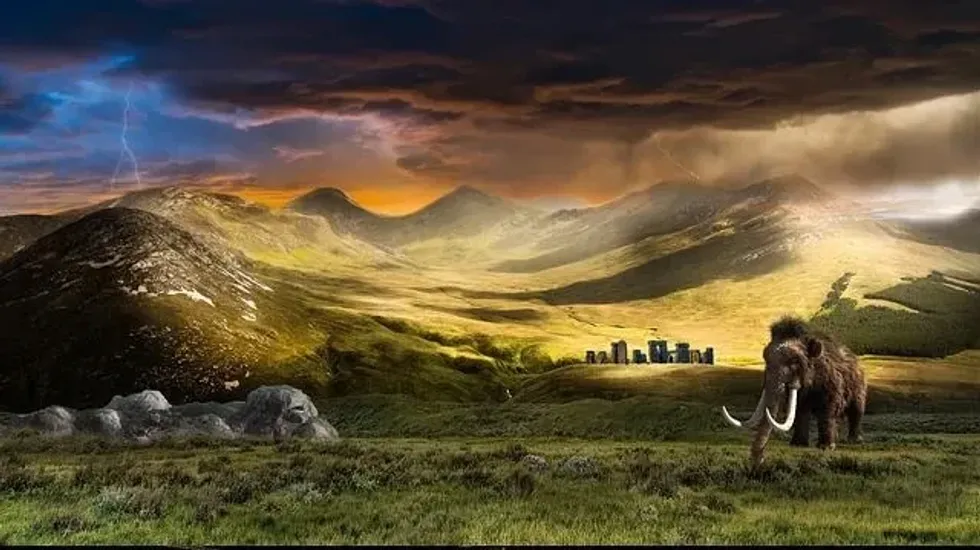The Cenozoic Era is an ongoing time period in earth's history.
The history of earth's time has been divided into three major eras. These three eras are made up of several other periods.
But how long has the Cenozoic Era been going on? When will the Cenozoic Era end? What were the primal animal species in this era? Get the answers to these questions as you read this article.
Facts About The Cenozoic Era
Since the dawn of time, earth has witnessed a lot. This entire time period is huge and cannot be studied in one sitting.
Keeping a record of what happened has been difficult, but scientists have developed numerous methods that can help us date back to the time and gather useful information from that period. In this article, we will discuss some of those facts and get to know more about this existing time frame.
The term 'Cenozoic' was derived from the Greek word 'Kainozoic', which means new, and 'zoe', which means 'life'.
Thus, the Cenozoic Era signifies new life, which is an ongoing time period.
The history of time is divided into three eras, namely, the Paleozoic Era, Mesozoic Era, and the Cenozoic Era.
'Paleozoic' means 'old life', and 'Mesozoic' means 'middle life'.
The Cenozoic Era began almost 65 million years ago, depicting the end of dinosaurs in the Mesozoic Era.
The Cenozoic Era is further divided into three periods, namely, the Paleogene period, Neogene period, and Quaternary period, arranged in the order of oldest to new.
The first period was the Paleogene period, which started 65.5 million years ago.
The second period was the Neogene period, which started 23 million years ago.
The third period was the Quaternary period, which started 2.6 million years ago.
Furthermore, the three periods are divided into seven epochs, which date back to the start of the Cenozoic Era.
The seven epochs arranged in order are: the Paleocene epoch (65.5 million years ago), the Eocene epoch (55.8 million years ago), the Oligocene period (33.9 million years ago), the Miocene epoch (23 million years ago), the Pliocene epoch (5.3 million years ago), the Pleistocene epoch (2.6 million years ago) and the Holocene epoch (0.01 million years ago).
The Cenozoic Era began when the K-Pg event (Cretaceous-Paleogene extinction) happened.
During this event, non-avian dinosaurs and many species went extinct.
Flowering plants started to inhabit the Earth's land and diversify.
This extinction was caused by the collision of an asteroid on the Earth's surface.
The Cenozoic Era was prominent in establishing the current status of life on Earth and other factors that support it.
Animals In The Cenozoic Era
Mammals began to dominate the Cenozoic Era, and for that very reason, the Cenozoic Era is known as the Age of Mammals. Let us look into more about the prime animals in the Cenozoic Era.
Mammals began to originate in this era and began to spread out.
Mammals evolved into the prime species after the extinction of non-avian dinosaurs.
The early mammals were known to be quite large during the start of the Cenozoic Era.
The Paleogene period is believed to be a crucial time regarding the conversion of the Earth after the K-Pg event occurred.
Sharks started to dominate the oceans and emerged to be at the pinnacle during that time.
Early mammals, such as Creodonts (archaic mammals), filled the land.
The early form of mammals such as horses, early primates, and sea whales were of small size.
The food chain was topped by a large avian called the Paracrax.
The increase of mammals to mammoth size began in the Mid-Eocene period.
The first time when elephants, dogs, cats, and marsupials emerged was during the Oligocene epoch.
Apes started to evolve into 30 different species during the Neogene period.
Hoofed mammals known to have claws, evolved during the Paleogene period.
Woolly mammoths, Eurohippus horses, and Saber-toothed tigers were supposedly the largest mammals during the early Cenozoic Era.
Armadillos, modern carnivore ancestors, and rodents started to appear.
Even though the large reptiles known as dinosaurs became extinct, smaller reptiles like snakes, turtles, lizards, and crocodiles existed.
Birds like penguins, gulls, pelicans, and ducks started to emerge during the Eocene epoch.
During the Oligocene Epoch, large hornless rhinos were known to be the biggest land mammal in Asia.
The Miocene epoch saw the migration of mammals to different places because of land bridges.
Mammals were high in number during the Miocene epoch.
Anthropoid apes were seen to emerge during this time.
Modern horses became prominent during the Pliocene epoch. Many species that we see now, including plants, were recognizable at that time.
Early hominids (Neanderthals) started to become extinct during the Pliocene epochs.
By the time of the Pleistocene epoch, almost all mammals that we see now had developed.
The Holocene, which started 0.01 million years ago, is the current epoch that we dwell in.
Modern humans saw their ancestors (Homo erectus) first come into existence 1.6 million years ago.
Homo sapiens started to evolve during the last 12,000 years.
The Cenozoic period also saw the emergence of modern birds during the last epoch of the Holocene and homo sapiens also became a prominent species.
The Holocene epoch is also known as the 'Age of Man'.
Events In The Cenozoic Era

The modern world and the continents that we see today came into being during the Cenozoic Era. Here are some facts to indulge in that talk about various events that took place during the Cenozoic period.
During the Cretaceous period, the temperature was quite hot and humid.
The sea level dropped during the Paleogene period to give rise to drylands like North America, Europe, Africa, and Australia.
The largest sea present in North America at that time disappeared.
Separate continents like South America, India, Africa, and Australia emerged during that time.
Plants like palm, pines, and cacti emerged for the first time during the Paleocene period.
Ocean circulation patterns started to change during the Paleogene period, which resulted in the disappearance of some sea organisms and small mammals.
India started to drift northward during the Eocene epoch, and it collided with Asia.
This collision gave rise to the Himalayan Mountain range.
Australia started to separate from Antarctica and drifted northward.
Flowering plants started to successfully diversify during this time.
The Eocene saw the collision of extraterrestrial objects that formed craters and mountain ranges.
Many of these craters can still be seen in Russia, Canada, and the USA.
During the Oligocene epoch, India further pushed into Asia. And South America separated from Antarctica.
The Gulf Coast was still filled with water and had fewer changes.
Volcanic activity started to increase during this time in North America and Europe. Yellowstone National Park is the lone survivor of this eruption.
The drifting of continental plates started to form new mountain ranges in South America, Africa, Europe, and North America during the Miocene epoch.
Continents on the Earth today are pretty much the same as they were in the Pliocene epoch.
The Mediterranean Sea started to dry up in the Pliocene epoch, and North and South America joined together at the Isthmus of Panama.
Grasslands and savannas were highly prominent during the Pliocene epochs.
Flowering plants were somewhat the same as we see them now.
The Pleistocene epoch saw the dominance of forests in a dry land.
The Cenozoic Era's Climate
Earth's climate underwent a huge turmoil during the Cenozoic Era. Temperatures were subjected to sudden ups and downs, which resulted in many changes. The present-day situation of Earth's climate is a result of a series of changes that happened in the Cenozoic Era. We will discuss these changes in this section.
The Paleocene climate was pretty warm and humid; it was also uniform.
Earth faced a sudden phase of global warming during the end of the Paleocene.
The reason for this global warming was the elevating amount of carbon dioxide and methane in the atmosphere.
The temperature was the warmest during the Eocene, and the Earth faced no rainfall at all.
But as the Eocene started to end, the Earth's climate saw a drastic change as the temperature started to drop. This produced major changes in flora and fauna.
The climate started to become cool and dry during the Oligocene. Earth started witnessing seasons.
Antarctica started to fill up with glaciers, which resulted in the lowering of the sea level.
The dried climate was beneficial for the growth of grasses on lands.
The Miocene brought along a warmer period of time. But in the latter half of the Miocene, the Earth faced cooler temperatures. This led to the accumulation of polar ice in Antarctica.
The latter half of the Pliocene saw cold temperatures with decreased rainfall. That time was termed the Ice Age.
This led to the accumulation of ice caps in the Northern Pole.
The beginning of the Quaternary period saw the global cooling phenomenon. The Pleistocene epoch saw the juggling of global warming and cooling every 100,000 years. This was known as the Interglacial period.
We still are present in the Interglacial period.
The northern part of the Earth got covered with ice during the glacial periods.
During the Quaternary period, much of the glaciers started drifting northward and the sea level decreased by 430 ft (131 m).
By the end of the Pleistocene epoch, human beings migrated to almost all of the continents, except Antarctica.









